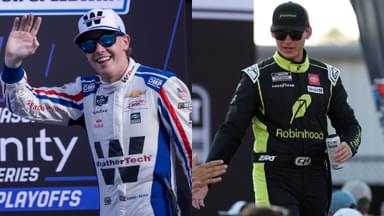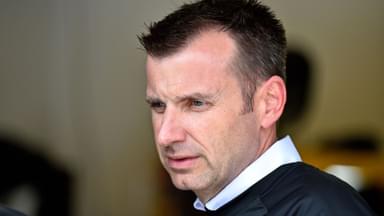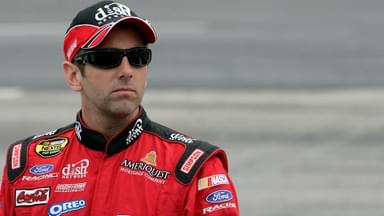One of the positive behavioral trends that NASCAR has displayed of late is its willingness to accept mistakes and better its racing product. The governing body has been acknowledging the shortcomings of the Next-Gen Cup Series car these past few years and has made big strides toward filling those gaps. Safety is a prime category in which these advancements can be easily noticed.
Advertisement
Just last Monday, Corey LaJoie was caught in a high-speed wreck that saw his #7 Chevrolet Camaro barrel roll through the infield grass and slide on its roof. Despite the impact, the car stayed intact and barely suffered notable damage to its body. Needless to say, the driver wasn’t injured either. This might not have been the case when the Next-Gen car was introduced in 2022.
COREY LAJOIE FLIPS AND SLIDES UPSIDE DOWN!#NASCAR | USA Network pic.twitter.com/Iyd3frqX5C
— NASCAR on NBC (@NASCARonNBC) August 19, 2024
NASCAR President Steve Phelps was recently on the Harvick Happy Hour podcast when he pointed out the steps that have been scaled. He told Kevin Harvick, “I think we have made significant gains in the front and the rear of the car trying to soften those up to make sure the crush panels are large enough that we can affect the energy transfer and not have that energy transfer go to the driver.”
He continued and made a special note of John Patalak, NASCAR’s Vice President of Safety Engineering, and his team, along with their commitment to protecting the drivers. Core areas that Patalak’s team made developments in are the seating and headrests, thanks to which rooted issues like concussions are far less likely now. Phelps then continued to admit that the car wasn’t ideal by any means when it came into the mix back in 2022
“It took longer than I would have liked”
He noted that there were issues in driver health and safety when the car’s rear came under impact back in 2022. This wasn’t something that his team could work on immediately and implement instantly. Multiple iterations that would not compromise the integrity of the car as well as other parts had to be tested and experimented with before being mandated to the teams.
He said, “It took longer than I would have liked but it was necessary in order to make sure that we were making the changes that were the right changes. That wouldn’t negatively affect another part of the car.” Going ahead, the goal is to eliminate the possibility of catastrophic injury or death in the NextGen car. But the president is clear that this cannot be done by compromising the satisfaction of drivers.
One of the most notable examples of drivers suffering concussions in the seventh generation racer came when Kurt Busch backed into the wall driving his #45 Toyota Camry fielded by 23XI Racing, resulting in a concussion severe enough to have prematurely ended his career in the sport.
No matter how hard I try I can never come to terms with this moment. It hurts so much knowing Kurt Busch a champion of the sport and a cool guy in general was forced into retirement because the car was so damn unsafe. Nothing can be done about it and that's what hurts to most. pic.twitter.com/ek78scbW2p
— TrainIsHere (@TrainWasHere) May 10, 2023
Instances like these highlight the importance of safety in global motorsports, especially when drivers are seen pack racing at near 200mph at a place like the upcoming Daytona International Speedway.








